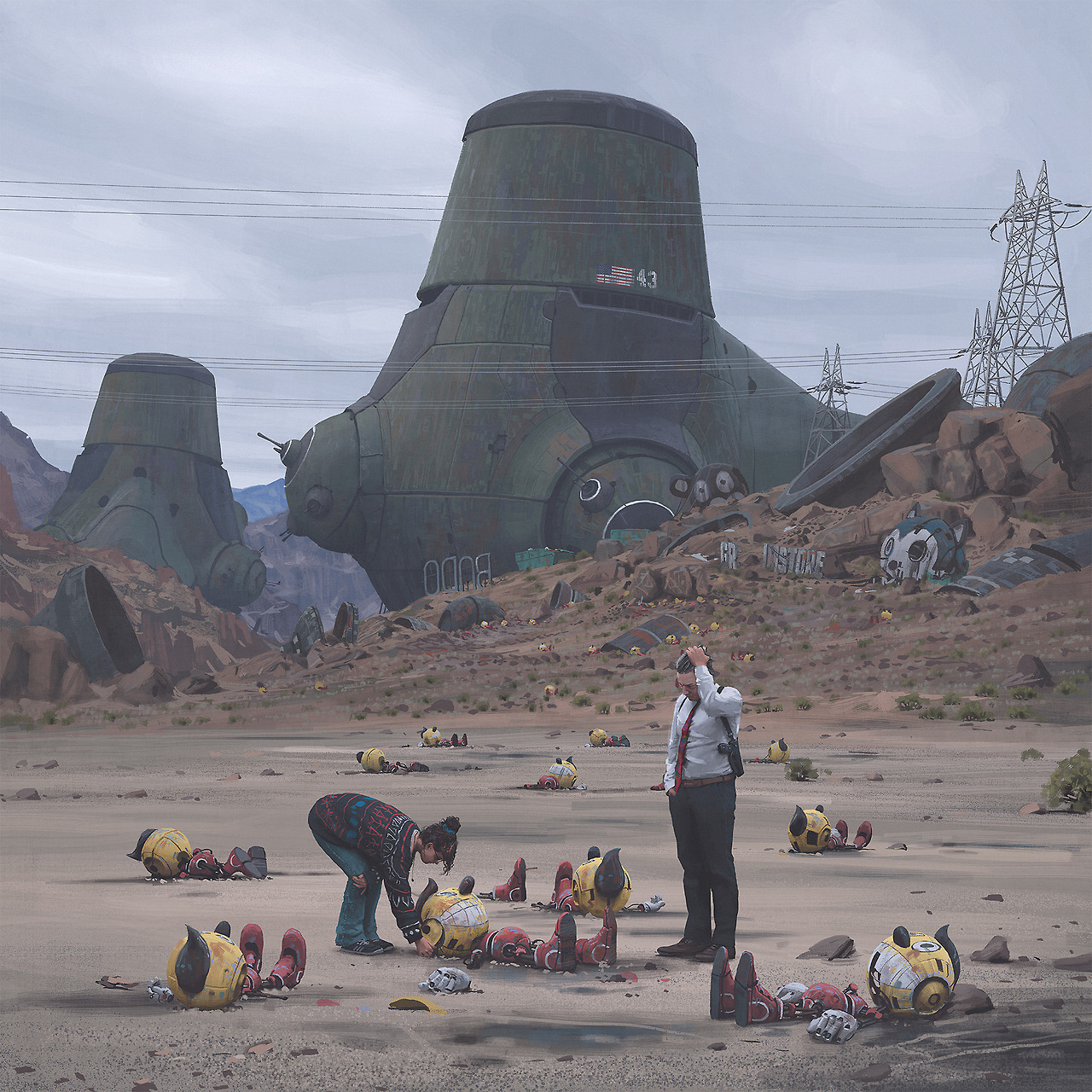

Both these moments occur near the end, and I won’t say too much so as not to give anything away accidentally, but there is a movie-feeling to both episodes, they are utterly absorbing, and I swear I could almost hear what was happening, as if my brain took the lack of descriptive writing as a sign to fill in the blanks for itself.
SIMON STALENHAG ELECTRIC STATE SERIES
One of the things I loved most about this book was that Stålenhag chooses, at two critical moments in the story, to forgo words and tell us what happens in a series of much more closely related images. At first it seems to be giving us a more factual account of the war and the technology behind it, but it becomes clear later that it is the voice driving the man who is tailing Michelle. Her story is a human one of loss, followed by loss, followed by loss, and it’s heart-breaking in its brevity. Through her we learn a little about how the world got the way it did and what’s she’s been through to survive. In the written part we learn the girl Michelle’s backstory, and, ever so slowly, her reasons for the journey she’s on.

It’s sparse, yes, but without it there’s only half a story.

That’s not to downplay Stålenhag’s writing though. There’s almost a George Lucas/Steven Spielberg vibe to this alternative America, but with fewer adorable robots and undertones that are a whole lot more disconcerting. Visually, a big part of the appeal of Stålenhag’s work in The Electric State is that it echoes so much of my childhood – a childhood spent watching and re-watching Hanna Barbera cartoons and movies like Flight of the Navigator, Robocop and Blade Runner, and playing games such as Pacman and Flashback. As for the drones leftover from the conflict, many have undergone strange makeovers and now, oddly cobbled together and trailing vine-like cables, they appear to have a life of their own. But neurocasters are proving to be fatally addictive, amongst other things. A company called Sentre has created the neurocaster, a VR helmet that looks like a plague mask as designed by Apple. The technology used in the war has bled out into the entertainment market.

We see evidence of other travellers in their parked cars and headlights on the road, we see lights on in suburban homes as the girl drives by, and as she moves into more populated areas, we see … far more unsettling things. The scars and detritus of this war litter the landscape: craters, huge abandoned shooting ranges, and the carcases of incredible weapons left where they fell like discarded toys and picked over by scavengers. In Stålenhag’s America, circa 1997, the country (perhaps the world? We never find out) has fought some sort of massive war using technology that has allowed humans to pilot giant warships and battle-robots remotely. The mounting unease I felt while reading this was unexpected, but, man, did I enjoy myself. This is an infectiously spooky, creep-inducing story told in sparse prose and stunning digital paintings. Banner by imyril of There’s Always Room for One More photo by Sebastien Decoret from Ī young girl and her little bobble-headed robot travel across a dystopian America, heading for the coast.ĭoesn’t sound too worrying, does it? Might even be adorable.ĭon’t be fooled.


 0 kommentar(er)
0 kommentar(er)
